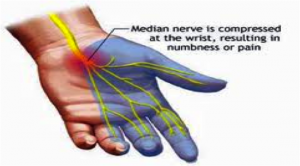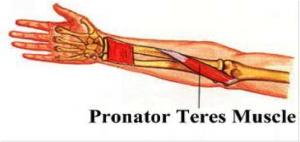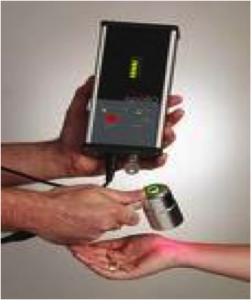A Better Way of Tackling Carpal Tunnel Syndrome
Note from FoundHealth: This post is contributed by Dr. Greg Barsten, a practicing clinician for over 22 years. As a chiropractor, certified clinical nutritionist, and registered medical herbalist, he relentlessly pursues and studies health and natural healing methods at his Health Quest practice in Los Gatos, CA.
Carpal tunnel syndrome, or “CTS” is the most common nerve compression problem in the upper body. Although statistics vary slightly each year, it accounts for tens of billions of $$$ in workers’ compensation costs annually in the U.S., according to the US Department of Labor, Occupational Safety and Health Administration (OSHA). Is it common? Upwards of 5% of all workers have it. Most common are women from age 30-50, and there’s a big-time increase in anyone with:
- Rheumatoid Arthritis
- Hypothyroidism
- Pregnancy
- Diabetes
- Dialysis use
What is the carpal tunnel?
It’s an anatomical tunnel on the underside of the wrist, with the ‘floor and sides’ formed by the carpal bones in the wrist and the ‘ceiling’ or top covered by a thick ligament (transverse carpal ligament), retinaculum (kind of like wrapping tape) and skin. Blood vessels, tendons and a nerve run through it. The nerve that runs through it is called the median nerve. This is the pain-and-pressure-sensitive tissue that causes all the problems.
How Does It Get Injured?
Although direct trauma and metabolic conditions mentioned above can be culprits or contribute, it’s most commonly caused by repetitive stress injury (RSI), where repeated actions over time build up, causing inflammation, swelling, and even adhesion (scar tissue) to put pressure on the median nerve. Can you say ‘keyboard’?
How Is It Diagnosed?
Carpal Tunnel Syndrome Symptoms can include:
- Numbness or tingling in thumb, index, middle side of ring finger
- Pain in elbow, wrist, hand or fingers, especially at night
- Weakness of the grip
Carpal Tunnel Syndrome Signs can include:
Orthopedic test failure (tethered median nerve test, Phalen’s & Reversed Phalen’s test, median nerve tapping/compression test, weak opponens pollicus or pronator teres muscle testing, etc)
Nerve testing (EMG, NCV, etc). These tests are usually performed in a clinical office setting.
How To Fix It?
Corrective stretches, exercises, wearing a brace, icing and rest can help. For advanced cases, a transverse carpal release or other surgery is performed, where a part of a ligament is removed to allow more space for the nerve. The problem is many of these don’t correct the condition, or require a second surgery due to scar tissue build-up. Is there a another way? YES!
The HealthQuestForMe 4-Step Carpal Tunnel Fix:
1) Correct misalignments of carpal bones using chiropractic or osteopathic manipulation.
2) Remove adhesion along nerve at wrist, FOREARM, ELBOW and NECK!!! Most cases have nerve entrapment at the pronator teres muscle in the upper forearm, usually ignored in standard treatments. The muscle contracts and shortens every time you have your palm facing down when using a keyboard! This gradually builds inflammation, which forms scar tissue, then puts pressure on the median nerve, which runs just under it.
My favorite soft tissue technique for these types of cases is Active Release Technique, which is performed by health professionals.
3) Cold laser therapy to all areas mentioned.
The application of cold laser therapy to the wrist, forearm, elbow and related cervical nerve root supplies can mean the difference between failure and success. It reduces swelling, inflammation and pain, as well as speeds healing by regenerating tissues and facilitating ATP production (the stuff all our cells need to make in order to repair). After using many lasers over the years, I’ve found the most effective ones have several basic requirements:
1) At least 2 watts of continuous power, or 25 watts of power if ‘super-pulsed’.
2) Have multiple wavelengths, using both red (visible) and infrared (invisible) light.
3) Have been clinically proven effective in human studies.
See Apollo and Multiradiance Medical for studies and related conditions treated successfully. Sorry, cheap lasers just won’t do the job!
4) Nutritional support for nerve healing. In my office, we successfully use Bromelain (minimum of 2,500 mcu/gram) on empty stomach at 2-3 caps, twice daily and vitamin B6 (pyridoxal-5-phosphate form only) at 50-100mg a day*. Take no more than 3 weeks without doctor supervision. Do not take bromelain if currently taking blood-thinning medication, or allergic to pineapple.
*Available at any health food store.
These methods far exceed the standard of care for carpal tunnel syndrome, and over the last decade, we’ve been able to successfully and completely fix most cases of CTS where other methods fail. Try to find a practitioner that uses these techniques and you have a great chance of full recovery!
References:
www.nlm.nih.gov/medlineplus/carpaltunnelsyndrome.html
Barsten G, McCarthy K, Conservative Chiropractic Approaches to Carpal Tunnel Syndrome. Topics in Clinical Chiropractic. Vol 6, Number 4, Dec. 1999.
The Effectiveness of Conservative Treatments of Carpal Tunnel Syndrome: Splinting, Ultrasound and Low-Level Laser Therapies. Photomed Laser Surg. Jan 26, 2009.
Join Our Community
Archives
- January 2023
- December 2022
- September 2022
- August 2022
- June 2022
- May 2022
- April 2022
- March 2022
- February 2022
- January 2022
- December 2021
- November 2021
- October 2021
- September 2021
- August 2021
- July 2021
- June 2021
- May 2021
- March 2021
- September 2020
- August 2020
- July 2020
- June 2020
- May 2020
- April 2020
- March 2020
- February 2020
Subscribe

Sign up to receive FREE toolkit
From Dr. Hyman, #1 NY Times & Amazon Author
We never spam or sell your e-mail






Follow Our Every Move